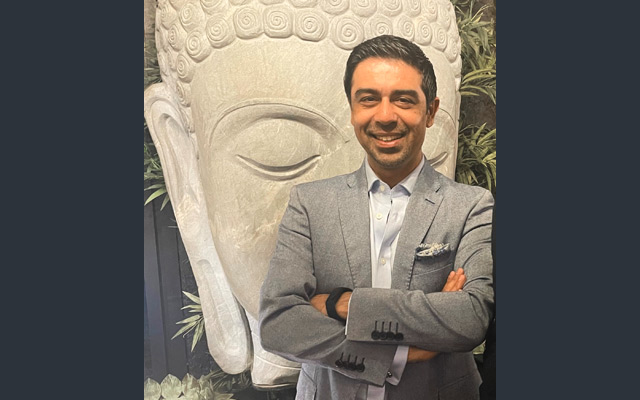The newly-appointed managing director of FCM India, Sunny Sodhi, expresses confidence in India's potential to thrive as an inbound business events destination, foreseeing new horizons for growth in the sector

As the new managing director of FCM Travel in India, what are the things on your to-do list?
There are a few key areas. Firstly, the widespread adoption of technology is paramount. In both personal and business travel, individuals have embraced technology wholeheartedly. We have a range of tech platforms powered by artificial intelligence AI that we aim to introduce to customers to enhance adoption.
Secondly, FCM has established an outstanding record in customer service with consistently high user experiences over the years. Our focus will remain in this area, and further elevate the user experience by leveraging the latest technology solutions.
We are also keen on developing a suite of non-air products, including hotels, railway car solutions, visa management, and sustainability. The goal is to position ourselves as a one-stop shop, offering a comprehensive suite of products to provide added value to our customers. We aspire to be travel partners, assisting our customers in growing their businesses.
Another of my priorities is our employees. As a certified ‘Great Place to Work,’ I will continue investing in our people because, ultimately, it is their commitment that will set us apart from others.
Could you paint a picture of India’s business travel performance last year?
Indian business travel rebounded last year, reaching pre-pandemic levels as demand surged. The primary driving force behind this growth was the eagerness of companies to meet customer needs, fulfil supply requirements, and expedite projects, leading to a substantial increase in travel activity.
Additionally, there was a notable uptick in demand for events and incentive business, with the exhibition sector making a robust comeback. Key contributors to the heightened demand for business travel in India included FMCG, insurance, pharmaceuticals, and banking companies.
Despite domestic air capacity exceeding pre-pandemic levels in terms of seat availability, international travel capacity remains a concern. Encouragingly, the gap between demand and supply is narrowing, and there are positive indications that international air capacity from India will return to pre-pandemic levels this year.
Obtaining visas continues to be a challenge, particularly for longhaul destinations such as the US and the Schengen region, with significant waiting periods. However, shorthaul destinations like Southeast Asia and the Middle East, along with domestic markets, benefitted as corporate entities explored alternative options.
Which outbound destinations are gaining popularity for incentive travel from India?
Vietnam is experiencing a significant surge in demand, with cities like Ho Chi Minh, Danang, and Hanoi becoming increasingly popular among Indian corporate travellers. Another destination generating substantial interest is Siem Reap in Cambodia. When it comes to longhaul markets, Japan and Turkey are steadily climbing the charts in terms of incentive travel popularity.
Do you see the emergence of India as an inbound MICE destination in the future?
There is significant activity unfolding in India with the emergence of new and noteworthy MICE venues such as the International Exhibition-cum-Convention Centre in New Delhi and The Jio World Convention Centre in Mumbai. These venues are established in cities encompassing top-notch hotels, dining options, and various tourist attractions.
I think that Mumbai and Delhi, being historically attractive to conferences and business travellers, position these convention centres favourably to draw substantial MICE attendance in 2024 and beyond.
Recently, India has also been making positive headlines, with its growing economy and business destination credentials. Across industries, from IT to pharmaceuticals, the growth is truly exhilarating. This growth signifies that industry-specific conferences, which were previously rare in India or often shifted to other parts of Asia, are now inclined to take place in the country.
Meanwhile, India’s rich culture and history have consistently drawn inbound travellers, and in the next two years, I think that India will not only be on par with its competitors in terms of infrastructure, but will also be a compelling incentive destination.
How do you perceive the evolution of domestic MICE demand in India compared to outbound MICE in 2024? Which specific MICE verticals do you anticipate gaining more traction in the coming year?
I anticipate a robust demand for both domestic and international destinations. Previously, most of the MICE movement used to be outbound, but these days, there is a lot more demand for inbound.
The MICE infrastructure in India has seen remarkable improvement, thanks to the establishment of new standalone venues and hotels equipped with state-of-the-art conferencing facilities.
The Indian aviation sector is also experiencing a boom, evident in the record aircraft orders from airlines. These factors collectively contribute to the escalating demand for domestic business events.
This demand isn’t limited to specific verticals. With the return to normalcy, whether it’s incentives, meetings, or participation in exhibitions, the demand is expected to be widespread.





















